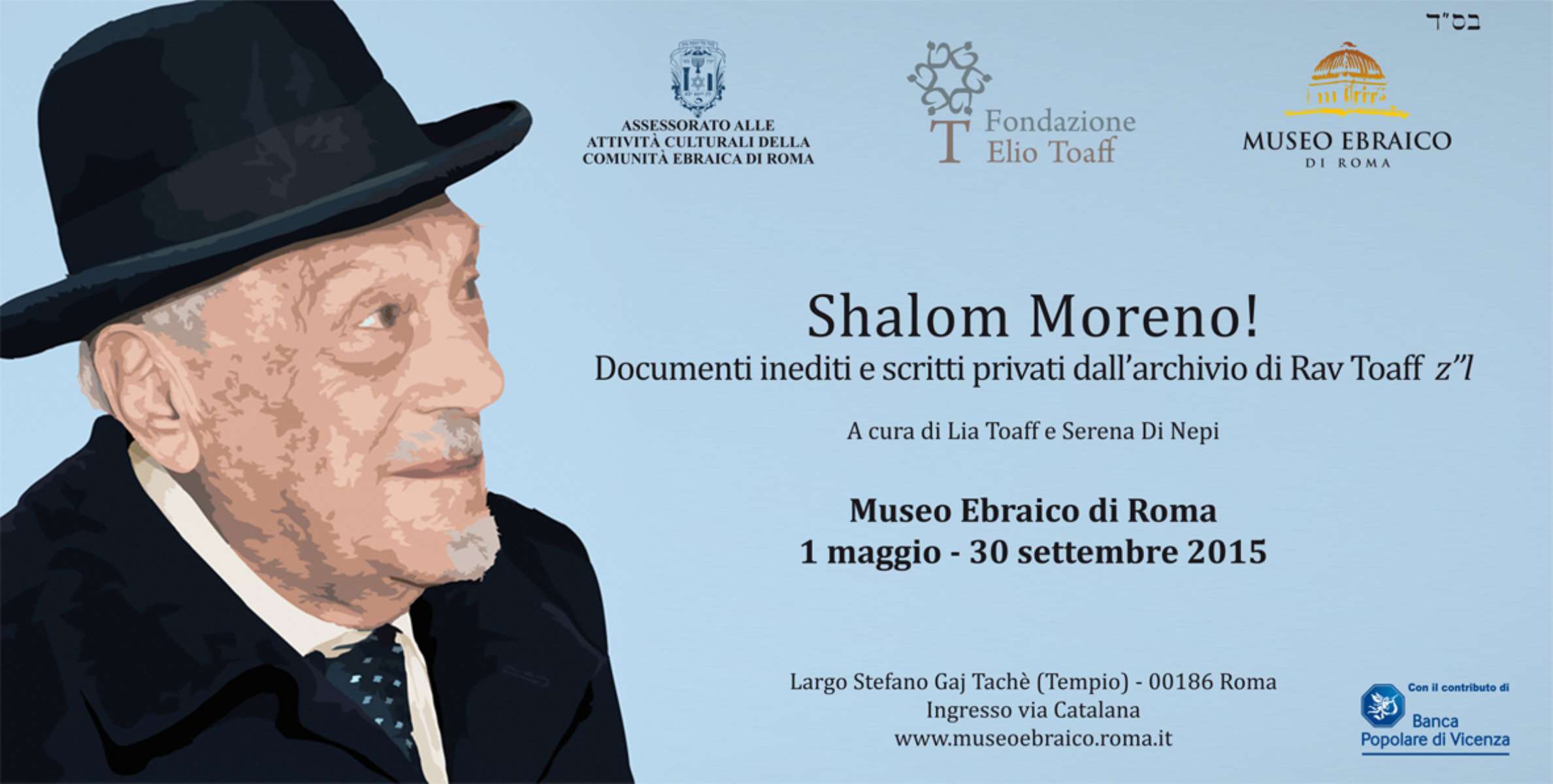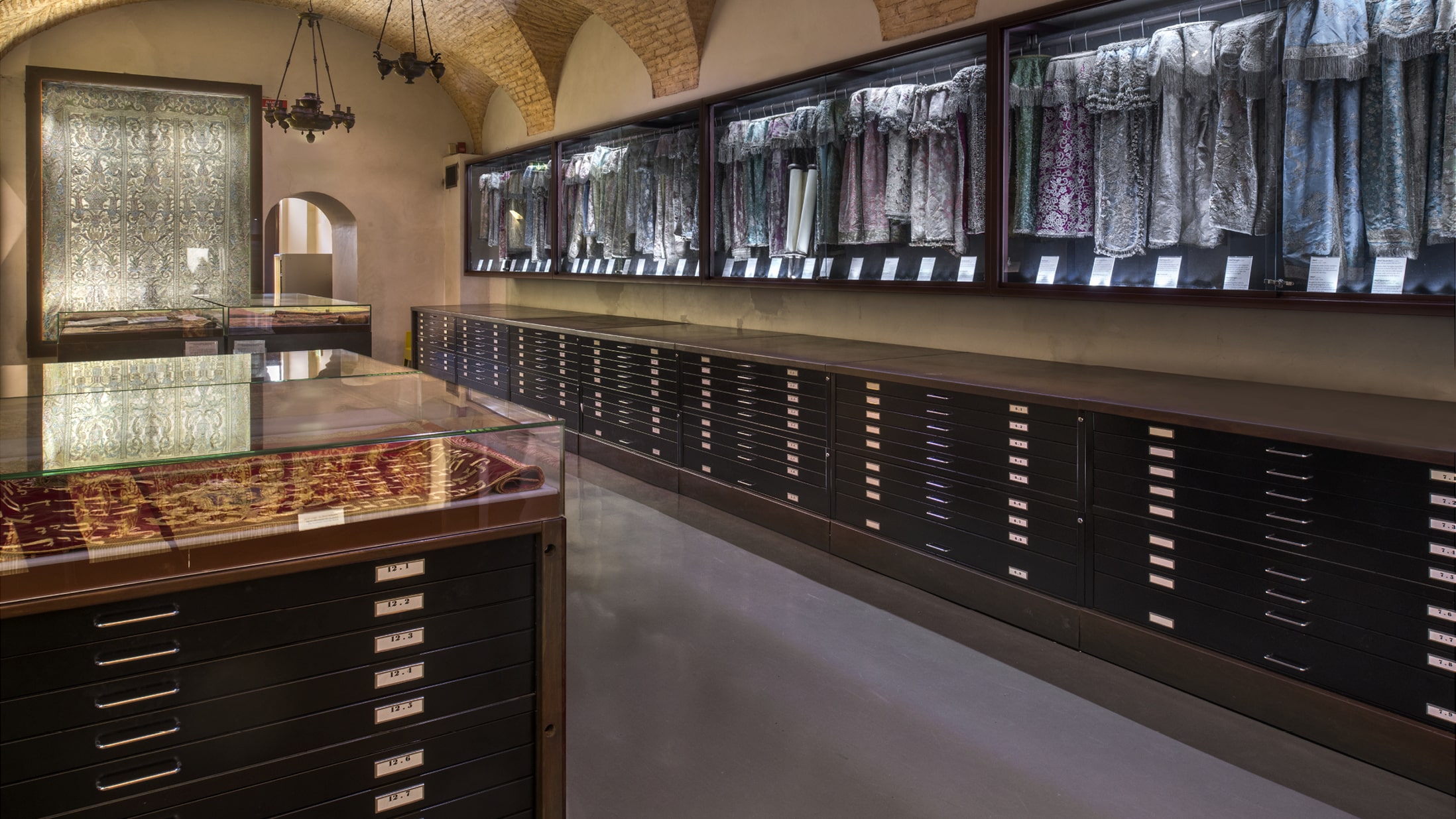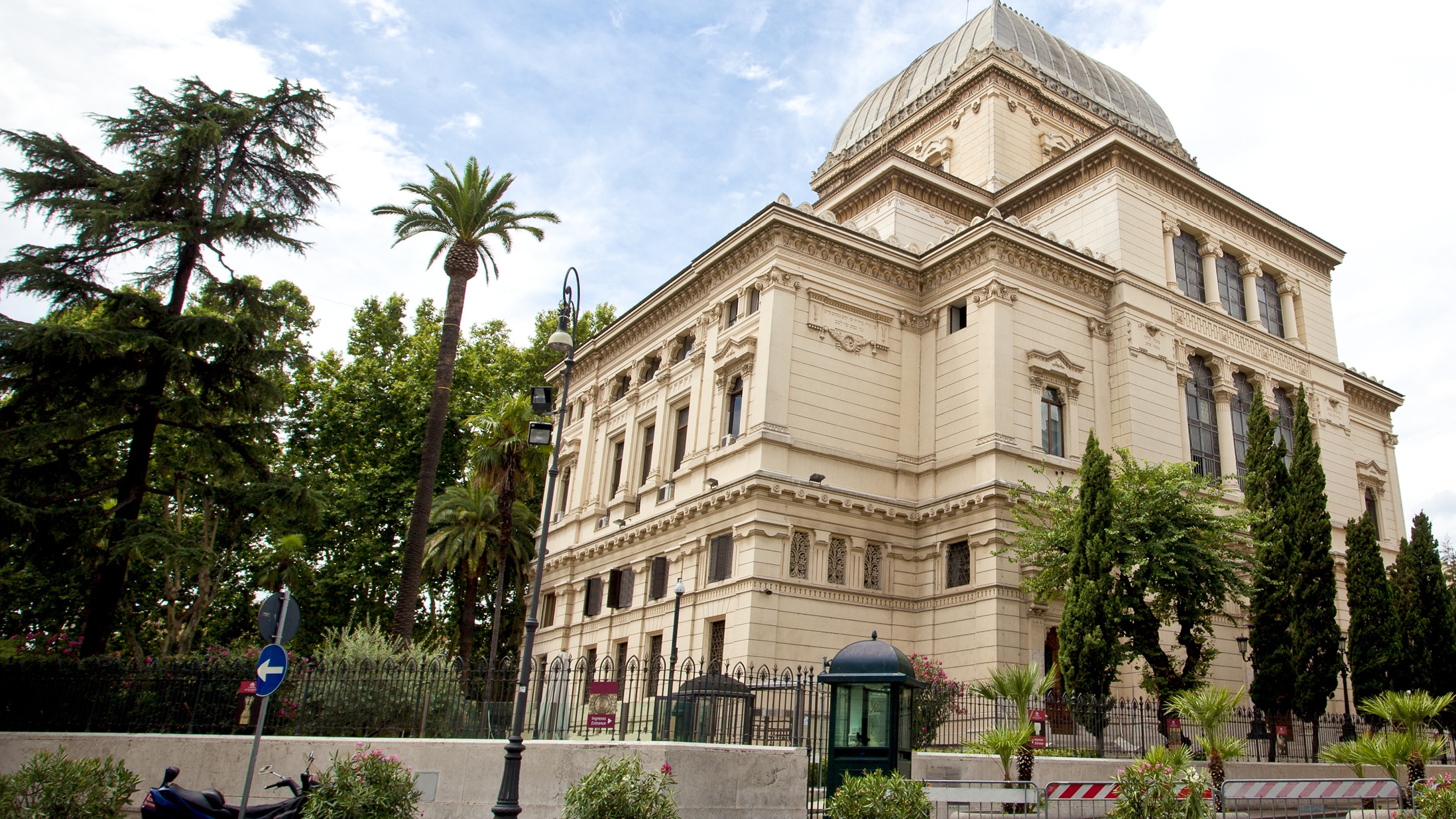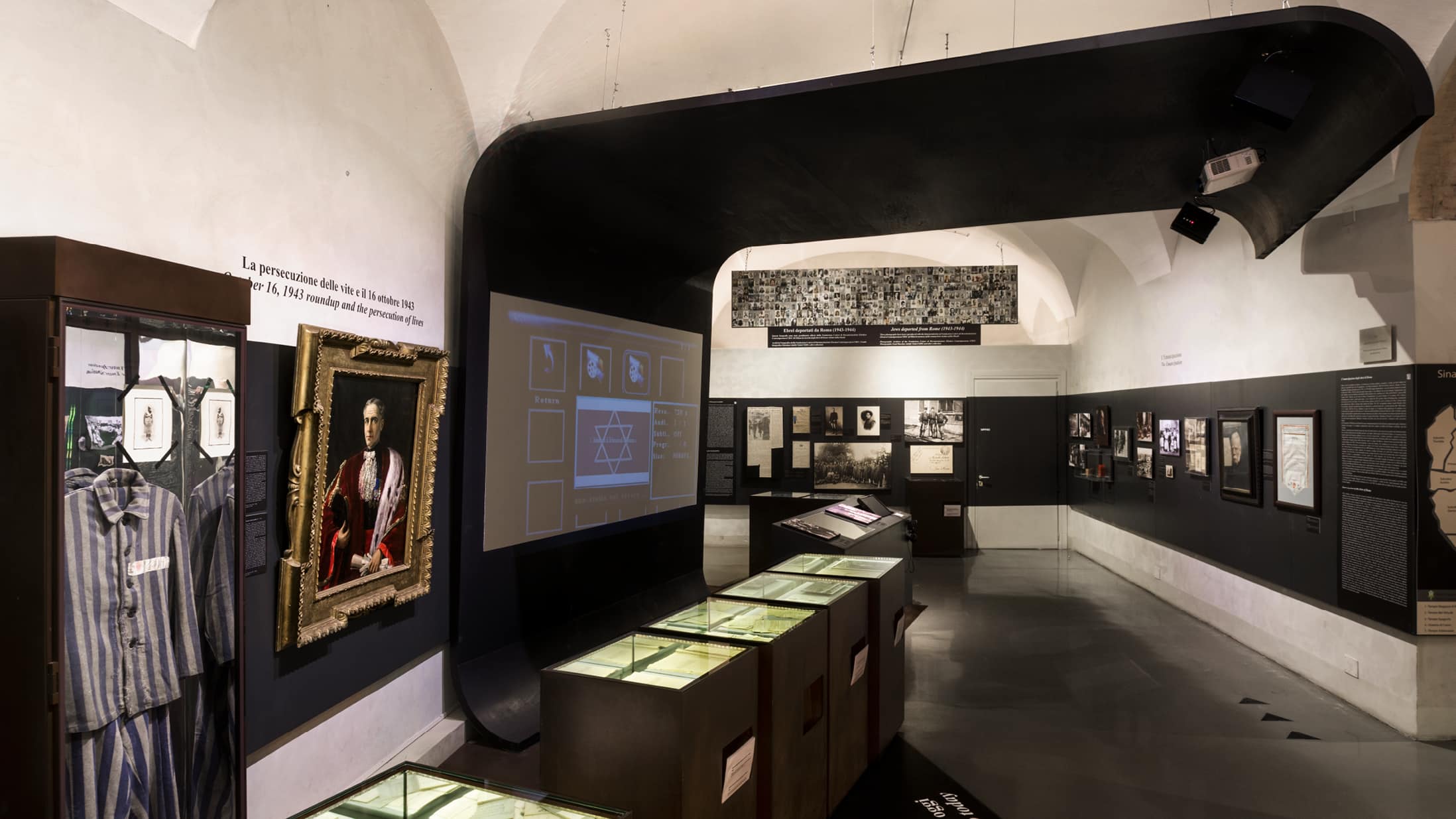 Exhibition
Exhibition
Shalom Moreno!
A combination of documents and photographs from the private archive of Toaff and the Archivio Storico of the Jewish Community in…

The Jewish Museum of Rome is the Museum of the local Jewish Community and its
history is closely linked to the history of the Roman Jews who have been continuously
present in the capital from the 2nd century B.C. to the present day.
Located since its foundation in 1960 inside the Major Temple, since 2005 it has been
totally renovated in the seven rooms of the basement of the monumental building,
where the Spanish Temple is also located, included in the visit itinerary together with
the Major Synagogue. The layout extends into an outdoor space on the same level
where the Gallery of Ancient Marbles was set up, also in 2005. The current
appearance of the museum fully meets the requirements of the International Council
of Museums, which defines a museum as “a permanent, non-profit institution that
acquires, conserves under protected conditions, researches, communicates and
exhibits, for purposes of study, education and enjoyment, material evidence of people
and their environment”. The current exhibition preserves and displays an
extraordinary artistic and documentary heritage that has survived pillage and
destruction thanks to the care of its custodians, ever since most of these objects were
used for ritual purposes. Even today, a small part of the precious artefacts is still used
for the same purposes.

The core of the collection comprises approximately nine hundred cloths and four
hundred pieces of silverware for liturgical use, what remains of the ancient
decorations for the Sefer Torah. These complex ceremonial machines constituted the
privileged gifts of Jewish families to their synagogues from the 17th to the 20th
century. They were families who had been resident in Rome for a long time, or who
came from the Latium countryside, and above all who had taken refuge here from
Spain and the Kingdom of the Two Sicilies after 1492, and who were linked,
depending on the rite celebrated in each of them, to one of the five synagogues, called
Scola Nova, Scola Tempio, Scola Siciliana, Scola Catalana and Scola Castigliana.
Since 1555, the year the ghetto was established, the five places of worship had been
united within a single building, therefore called the Five Scola, the beating heart of
religious and social life in the old Jewish quarter.
From the time of the renovation to the present day, the Museum’s collection has been
enriched by generous donations, some of which have made it possible to explore
tragic chapters in the history of the Community in the 20th century: from the
diaspora of Libyan Jews, to which an entire room has been dedicated, to racial
persecution before and during the Second World War. Unlike many other Jewish
museums, this one in Rome does not have among its primary needs that of recovering
looted heritage, but rather to restore, study and exhibit the objects preserved, as well
as to interact with the Jewish places of worship in the city for the temporary loan
mentioned above. Forces are therefore concentrated, thanks to intensive fundraising
activities, on restoration work, which is proceeding at full speed, and on
communication.
In addition to the fundamental ordinary activities, great efforts are devoted to
extraordinary projects such as the large exhibitions, which not only provide an
opportunity for more accurate research, but also offer a wider public previously
unseen aspects of the life and culture of the Roman Jewish community and, even
more so, emphasise the artistic, intellectual and religious intertwining with the rest of
Rome, and Italy. This important goal has therefore been achieved with the
exhibitions that are organised annually at the Museum:

Equally intense is the activity dedicated to exhibition projects carried out in
collaboration with other museums:
The Jewish Museum of Rome is also attentive to technological evolution and the introduction of interactive innovations, tools that allow visitors to have an immediate perception of the object on display and the historical reconstruction. Thus, the following have been realised: the virtual tour of the ancient Jewish quarter, the 3D reconstruction of the Ostia Antica Synagogue, and the educational multimedia table on the history of the Libyan Jews.
The Jewish Alsatian Museum, located in an ancient synagogue that was severely damaged by the Nazis, introduces the visitor to the…
The Museum of the Jewish History in Russia aims to reconstruct a complete picture of Jewish life in the variety of…
In order to furnish the SchPIRA Museum, the Historical Museum of the Palatinate and the State Office for Historic Preservation made…
The Jack, Joseph, and Morton Mandel Wing for Jewish Art and Life The Mandel Wing for Jewish Art and Life Wing…
The Galicia Jewish Museum was created in 2004 to commemorate the victims of the Holocaust, celebrate the richness of Jewish history…
At the Jewish Museum of Westphalia visitors can learn about the Jewish history of Westphalia and Jewish religion and culture more…